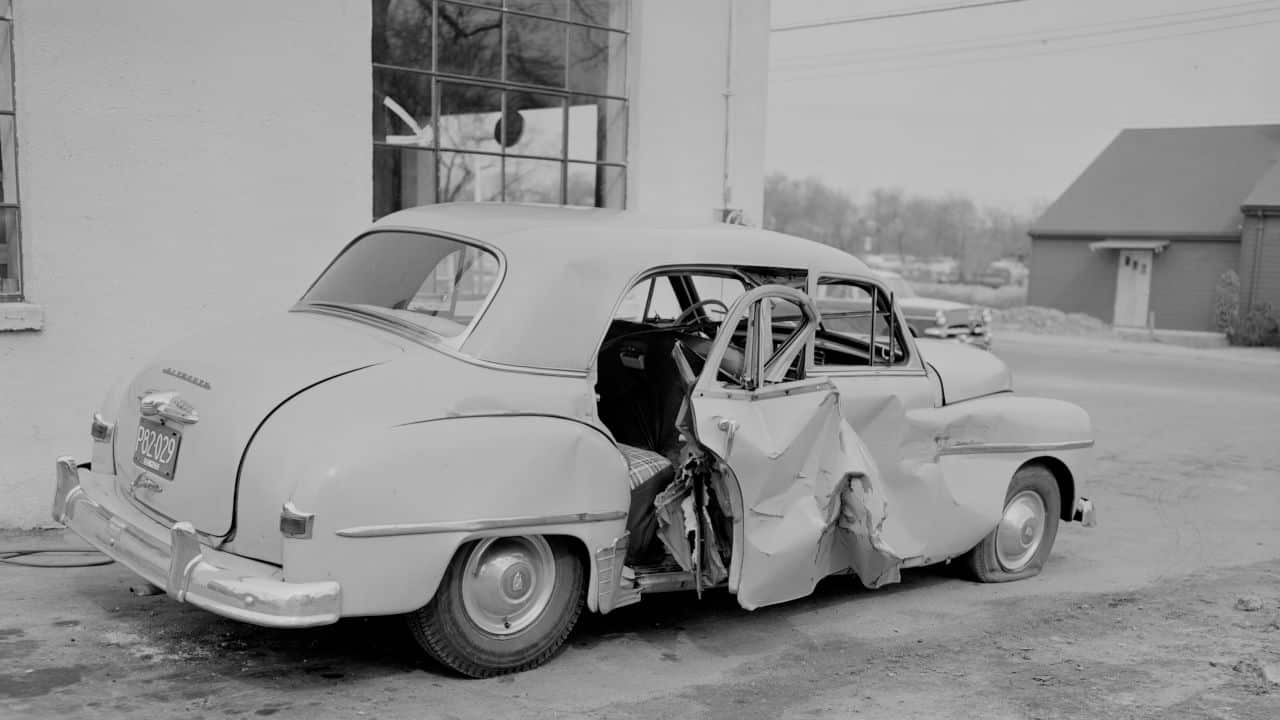A lateral impact crash is a collision between vehicles whereby one vehicle hits the side of another vehicle with the front or rear of the vehicle.
The collision can occur between similar vehicles or more oversized vehicles like trucks and small cars. The casualties are more fatal when the collision happens between a smaller and a larger vehicle than between two similarly sized vehicles.
Literal impact crashes are also popularly known as T-bone crashes or broadside collisions.
Why is Lateral Impact Crash a Total Nightmare?
Lateral impact crashes are known to be very deadly. They are sometimes referred to as the deadliest type of road accident.
According to an article by Betz and Baril titled Side-Impact Collision, it was stated that “a side-impact collision is more deadly than any other type of accident with the exceptions of rollovers.” The reason behind this is that while many safety measures are designed with vehicles such as airbags and seat belts, the safety measures do not offer any protection for an impact from the side.
Only a few vehicles offer protection against side crashes.
Lateral impact collisions lead to death, paralysis, nerve damage, traumatic brain injury, and blunt traumatic rupture of the thoracic aorta.
Katyal et others (1997), in their article titled Lateral Impact Motor Vehicle Collisions: A Significant Cause of Blunt Traumatic Rupture of the Thoracic Aorta, emphasized the devastating effects of lateral impact crashes. It was stated that “lateral impact crashes are a significant cause of TRA. Traumatic rupture of the aorta should be considered with a high index of suspicion after serious lateral impact crashes, just as physicians now consider patients at high risk of TRA after serious frontal impact crashes.”
Using Legal Animation to Depict the Cause of a Lateral Impact Crash in Court
Lateral impact crashes are known to occur at intersections. When such crashes occur, it becomes essential to know who had the right of way at the time of the incident, thus helping the court discover the person who caused the collision.
It is very easy to accuse the driver of the car that crashed into the side of another vehicle, but it should be noted that it’s not as straightforward as it looks. This is because there could be a lot of factors in motion at that exact point in time, thus leading to the accident.
Hence, it helps to know the exact cause of the accident. Here are some of the possible causes of lateral impact crashes:
- Drunk driving
According to the National Highway Traffic Safety Administration, “every day, about 28 people in the United States die in drunk driving crashes. That’s one person every 52 minutes.”
Drunk driving may be the cause of a literal impact crash. People make bad decisions while driving, like running a red light or not paying enough attention at an intersection.
Legal animation can portray the effect of alcohol drinking and the bad driving decisions that caused the accidents. A forensic expert can assist in this respect.
- Non-adherence to traffic signals or faulty traffic lights
Traffic lights are set up to prevent accidents and allow for orderly movements of vehicles on the road. Slight disobedience to traffic signals can have disastrous effects on other road users.
Therefore, if a driver runs a red light, it could be hit or could hit another vehicle coming from a perpendicular direction. Faulty traffic lights could also cause this.
Legal animations can be used to depict the points where the vehicles were before the accident happened and the effect the traffic light had on the drivers.
- Distracted driving
Distracted driving is an easy cause of lateral impact crashes. Distraction can be brought about by emotional turmoil or using phones while driving.
According to the National Highway Traffic Safety Administration, distracted driving claimed 3,142 lives in the United States in 2019 alone.
Legal animation recreated with the help of experts and forensic technicians can help to prove that the distraction of one driver is the cause of the accident. The driver at fault may not even be affected by the accident at all. This is why legal animation must be done under the care of experts to locate substantial but minute evidence.
Conclusion
Different factors can cause lateral impact crashes, all of which can be identified if due diligence is done in the investigations. Legal animation can be used to make this process much more manageable.





